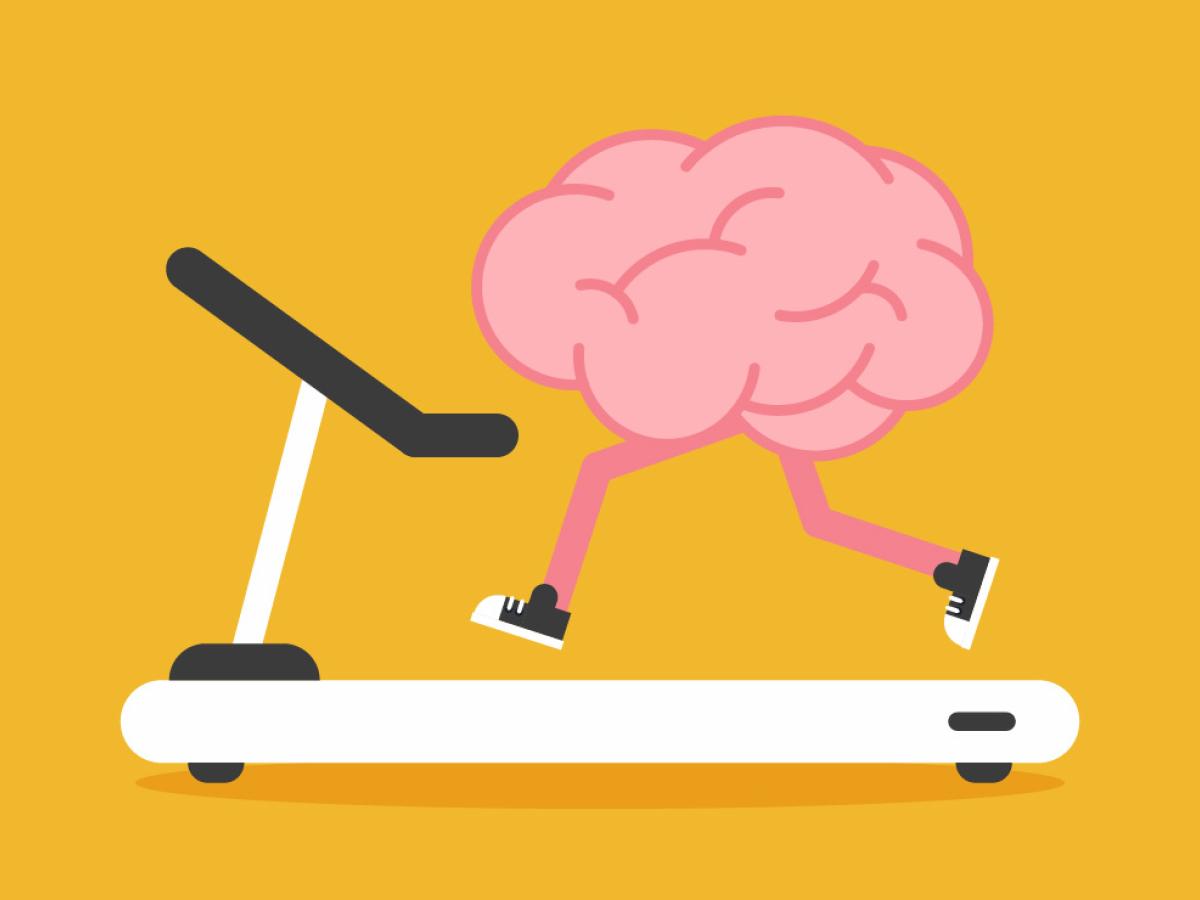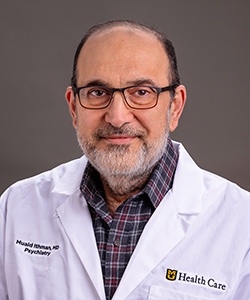May 24, 2023

Have you ever wished you could turn your brain off? It may seem like a good idea when you’re thinking negative thoughts, fixated on a particular worry or unable to drift off to sleep. But when it comes to depression, the problem may not be that your brain is “on.” It might actually be that parts of your brain are malfunctioning and not “on” enough.

“The brain is a complex organ. It regulates all our physical and emotional activities using complex neurochemical reactions,” says Dr. Muaid Ithman, an MU Health Care psychiatrist. “It allows us to survive, but like any organ in our body, it’s subject to different kinds of disorders including, but not limited to, depression.”
Each year, more than 8% of U.S. adults experience major depression — sadness and loss of interest in activities lasting two weeks or more. The first step in treatment for depression is medication and psychotherapies (talk therapies), but for 30% of people with depression, those treatments don’t help.
That’s where transcranial magnetic stimulation (TMS) comes in. Unlike antidepressants and other medications that affect the whole body, TMS targets precise areas of the brain associated with depression. It re-trains those parts of the brain so they’ll function normally.
What Happens in the Brain During Depression?
Depression isn’t just a state of mind or a passing mood. When someone experiences depression, the neurons in certain parts of the brain are inactive and don’t release neurotransmitters — the chemicals that regulate mood and stress.
“Studies have shown that depression has biological origins,” Dr. Ithman says. “It involves changes in the brain’s structure, often brought on by inflammation, increased stress and a release of hormones.”
Inflammation and hormonal changes damage neurons and physically change the brain’s structure. Two areas impacted by the stress hormone cortisol are the:
- Amygdala, responsible for controlling emotions and sleep
- Hippocampus, responsible for learning and memory
When these structural changes happen, the brain’s chemical balance is off, and neurotransmitters aren’t functioning as they should. Changes in how you think, what you feel and how you sleep can leave you feeling foggy, lethargic and emotionally out of control.
“Depression is more than just the feeling sad,” Dr. Ithman says. “It's a disorder that impacts different aspects of life and causes a lot of physical dysfunction.”
Challenges of Treating Depression
The gold standard of depression treatment is medication and psychotherapy (talk therapy). Antidepressant drugs are systemic medications that travel throughout your body, increasing the neurotransmitters associated with depression. Talk therapy provides tools to help you manage stress.
“Once the depression gets better, the stress level will decrease. With less cortisol, your mood will improve,” Dr. Ithman says.
But that’s not all.
“Stressors are one of the reasons people get depressed. But there's also genetic predisposition — some brains are prone to get depressed. That’s why two people will have the same stress, but one will get depressed and the other will not.”
Genetic predisposition may also explain why one out of every three patients has treatment-resistant depression. They don’t respond well to at least two different categories of medications, even with the right dosage and treatment time.
Treatment-resistant depression often requires an alternative treatment option. Some people use other treatments that affect the whole body, such as combination drugs or psychedelics like ketamine. Another option to consider is TMS treatment, which directly targets the areas of the brain associated with depression.
What Is TMS Therapy?
TMS is a type of neuromodulation therapy — treatment that alters nerve activity. A coil placed on your scalp delivers short, pulsating magnetic waves to target the specific area of the brain known to be involved with depression.
“These pulses penetrate the skull and transform into an electric current in the brain,” Dr. Ithman says. “That current stimulates the neuro circuits into action and generates a cascade of reactions deep in the brain. It’s like taking these neuro circuits and putting them in a bootcamp to activate them and make them work.”
TMS has been in clinical practice for over a decade now. It gained FDA approval for major depressive disorder (MDD) in 2008 and obsessive-compulsive disorder (OCD) in 2018.
According to Dr. Ithman, it has proven to be an effective, safe and well-tolerated treatment option. The most common side effects are localized headaches or irritation immediately following the treatment, but those reactions are limited.
Given its success, researchers continue to study TMS, hoping to expand its use to treat anxiety, post-traumatic stress disorder (PTSD) and other mental illnesses.
How TMS Treatment Works
Health care professionals use TMS therapy to treat a major depressive episode or the sudden onset of depression symptoms. Treatment involves 36 total sessions:
- First 30 sessions given five days a week, Monday through Friday, for six weeks
- Six remaining sessions given over three weeks
A regular TMS session lasts 20 minutes. But there is also an express TMS treatment available. It takes three minutes and uses a stronger magnetic pulse.
“Whenever possible, we’ll use the 3-minute option,” Dr. Ithman says. “It’s just as effective and not inferior in any way. But sometimes insurance dictates which option to use.”
As many as 60% of people with treatment-resistant depression benefit from TMS. For 33% of those people, symptoms of depression disappear entirely. But there is no guarantee that depression won’t return. Your doctor may recommend medication for maintenance after completing TMS therapy.
“Remember, depression is a chronic illness,” Dr. Ithman says. “It needs continuous treatment, like any other chronic medical illness, where it can be manageable and well-controlled with the right tools and guidance.”
Next Steps and Useful Resources
- Want to know more? Read about TMS and other interventional psychiatry treatments.


